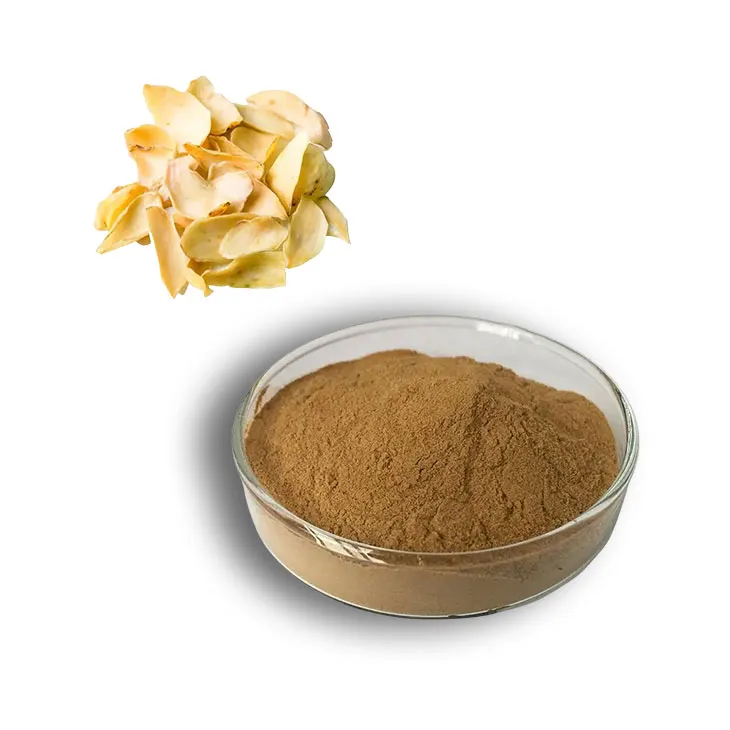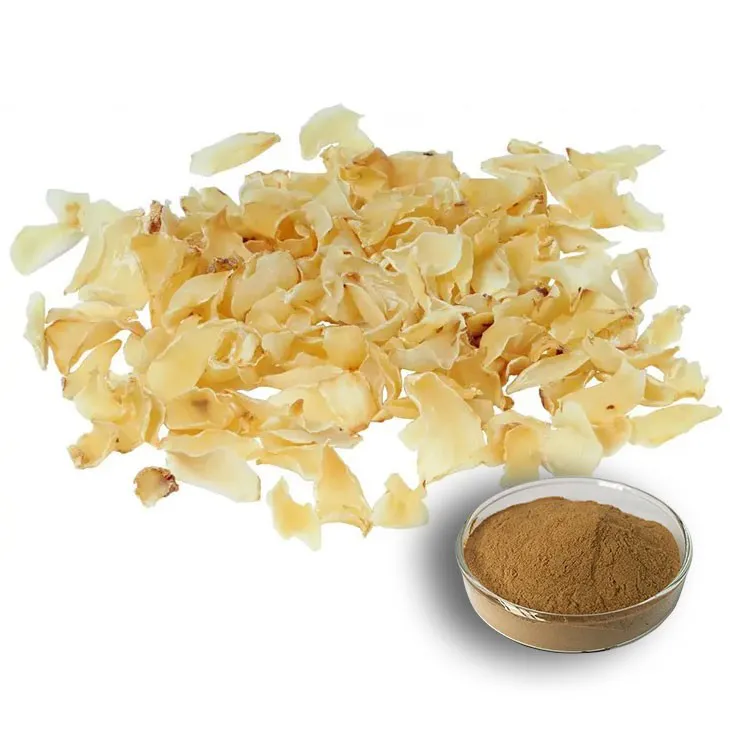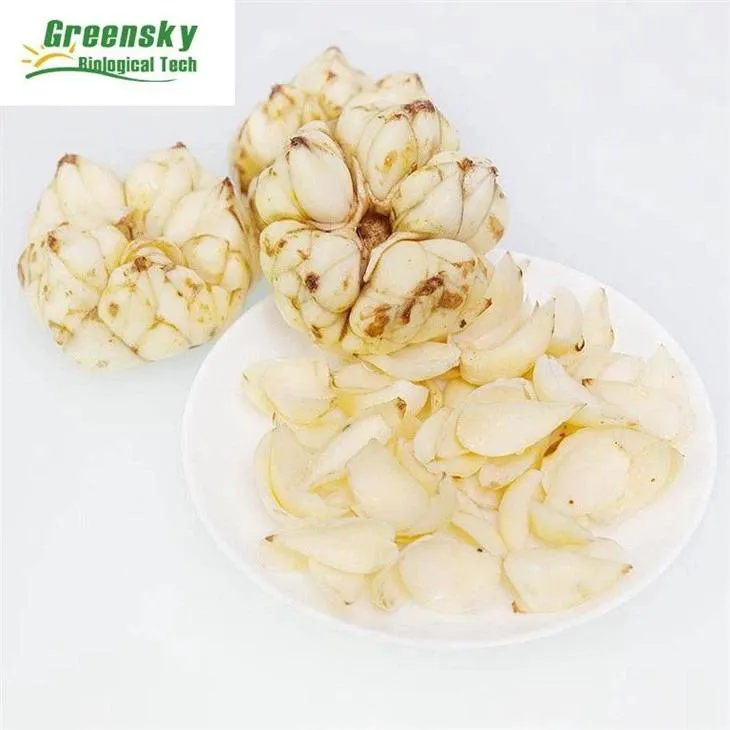- 0086-571-85302990
- sales@greenskybio.com
The Most Well - received Lily Extract.
2024-11-30

1. Introduction
Lily extract has emerged as one of the most well - received natural substances in various fields. Its popularity stems from its multiple beneficial properties and its long - standing cultural and historical significance. This article will explore the reasons behind the wide acclaim of Lily extract, delving into its applications in cosmetics, traditional and modern medicine, and environmental protection.

2. Applications in Cosmetics
2.1 Skin Nourishment
Lily extract is a star ingredient in cosmetics. It has the remarkable ability to penetrate deep into the skin cells. Once inside the cells, it provides essential nourishment that is crucial for the skin's health. This nourishment helps in maintaining the skin's natural moisture balance, which is vital for preventing dryness and flakiness.
2.2 Cell Regeneration Promotion
Another significant aspect of lily extract in cosmetics is its role in promoting cell regeneration. As skin cells are constantly renewing themselves, the extract accelerates this process. By doing so, it helps to reduce the appearance of fine lines and wrinkles, giving the skin a more youthful and radiant look. This is especially important for those who are concerned about the signs of aging and are looking for natural solutions to maintain healthy - looking skin.
3. Cultural and Historical Significance
3.1 Symbol of Purity and Beauty
Lilies have held a special place in many cultures throughout history. In numerous cultural traditions, lilies are associated with purity and beauty. This association has been passed down through generations and has contributed to the allure of lily extract. For example, in Western cultures, white lilies are often used in religious ceremonies and weddings, symbolizing purity and new beginnings. In Asian cultures, lilies are also highly regarded for their aesthetic value and are often depicted in art and literature as symbols of beauty.
3.2 Influence on Popularity
The cultural significance of lilies has had a direct impact on the popularity of lily extract. Consumers are often drawn to products that have a connection to cultural values and traditions. When they see lily extract in cosmetics or other products, they are more likely to be attracted to it because of the positive connotations associated with lilies. This cultural connection gives lily extract an edge over other ingredients in the market, making it a highly sought - after component.
4. Use in Traditional and Modern Medicine
4.1 Traditional Medicinal Uses
Lily extract has a long history of use in traditional medicine. For centuries, it has been used to treat various ailments. One of the most well - known traditional uses is in relation to respiratory problems. In traditional medicine systems, it was believed that lily extract could soothe the respiratory tract, relieve coughs, and ease breathing difficulties. It was often prepared as a herbal tea or tincture for these purposes.- For example, in some traditional Chinese medicine practices, certain types of lilies were used to clear heat from the lungs and resolve phlegm.
- In European herbal medicine traditions, lily bulbs were sometimes used to treat bronchitis and other respiratory infections.
4.2 Modern Research and Potential
Modern research is now exploring the potential of lily extract in treating more complex diseases. Scientists are interested in its chemical composition and the various bioactive compounds it contains. Some studies have suggested that lily extract may have anti - inflammatory properties, which could be beneficial in treating inflammatory diseases such as arthritis.- Research is also being conducted on its potential anti - cancer properties. Some early studies have shown that certain compounds in lily extract may have the ability to inhibit the growth of cancer cells, although more research is needed to fully understand this potential.
- Furthermore, lily extract may have a role in improving cardiovascular health. It could potentially help in reducing blood pressure and cholesterol levels, but again, more in - depth research is required to confirm these effects.

5. Environmental Protection Aspect
5.1 Environmentally Friendly Extraction Process
In the field of environmental protection, the extraction process of lily extract is relatively environmentally friendly compared to some synthetic substances. The extraction of lily extract often involves natural and sustainable methods. For example, it can be obtained through cold - pressing or water - based extraction techniques, which generally use less energy and produce fewer harmful by - products compared to chemical synthesis methods.
5.2 Appeal to the Market
As the market becomes increasingly conscious of environmental sustainability, the environmentally friendly nature of lily extract makes it more appealing. Consumers are more likely to choose products that are not only beneficial for their health but also have a lower impact on the environment. This gives products containing lily extract an advantage in the market, as they can attract consumers who are environmentally - minded as well as those who are interested in the extract's other beneficial properties.6. Conclusion
The most well - received lily extract has a wide range of applications that span across cosmetics, medicine, and environmental protection. Its ability to nourish the skin, promote cell regeneration, and its historical and cultural significance make it a valuable ingredient in cosmetics. In medicine, both its traditional uses and its potential in modern research highlight its importance. Moreover, its environmentally friendly extraction process gives it an edge in an increasingly eco - conscious market. Overall, lily extract is a remarkable substance with a bright future in multiple industries.
FAQ:
What are the main applications of lily extract in cosmetics?
Lily extract in cosmetics can penetrate deep into skin cells. It provides nourishment and promotes cell regeneration, which is crucial for maintaining healthy skin.
How does the cultural significance of lilies affect the popularity of lily extract?
In many cultures, lilies are associated with purity and beauty. This cultural connection has made lily extract more popular as it inherits these positive connotations.
What are the traditional medical uses of lily extract?
For centuries, lily extract has been used in traditional medicine to treat various ailments. It has been believed to be beneficial for respiratory problems.
What potential does lily extract have in treating complex diseases according to modern research?
Modern research is exploring the potential of lily extract in treating more complex diseases, but specific findings are still in the research stage.
Why is the lily extract more appealing in terms of environmental protection?
The extraction process of lily extract is relatively environmentally friendly compared to some synthetic substances, so it is more attractive to the market that focuses on environmental sustainability.
Related literature
- The Bioactive Compounds of Lily and Their Potential Applications"
- "Lily Extract: A Natural Ingredient with Multiple Benefits"
- ▶ Hesperidin
- ▶ Citrus Bioflavonoids
- ▶ Plant Extract
- ▶ lycopene
- ▶ Diosmin
- ▶ Grape seed extract
- ▶ Sea buckthorn Juice Powder
- ▶ Fruit Juice Powder
- ▶ Hops Extract
- ▶ Artichoke Extract
- ▶ Mushroom extract
- ▶ Astaxanthin
- ▶ Green Tea Extract
- ▶ Curcumin
- ▶ Horse Chestnut Extract
- ▶ Other Product
- ▶ Boswellia Serrata Extract
- ▶ Resveratrol
- ▶ Marigold Extract
- ▶ Grape Leaf Extract
- ▶ New Product
- ▶ Aminolevulinic acid
- ▶ Cranberry Extract
- ▶ Red Yeast Rice
- ▶ Red Wine Extract
-
Coix Seed Extract
2024-11-30
-
Propolis Extract Powder
2024-11-30
-
Shikonin
2024-11-30
-
Sugarcane Extract
2024-11-30
-
Milk Thistle Extract
2024-11-30
-
Beetroot Powder
2024-11-30
-
Jujube Extract
2024-11-30
-
Beetroot juice Powder
2024-11-30
-
Eucommia Ulmoides Extract
2024-11-30
-
Oyster Mushroom Extract Powder
2024-11-30





















